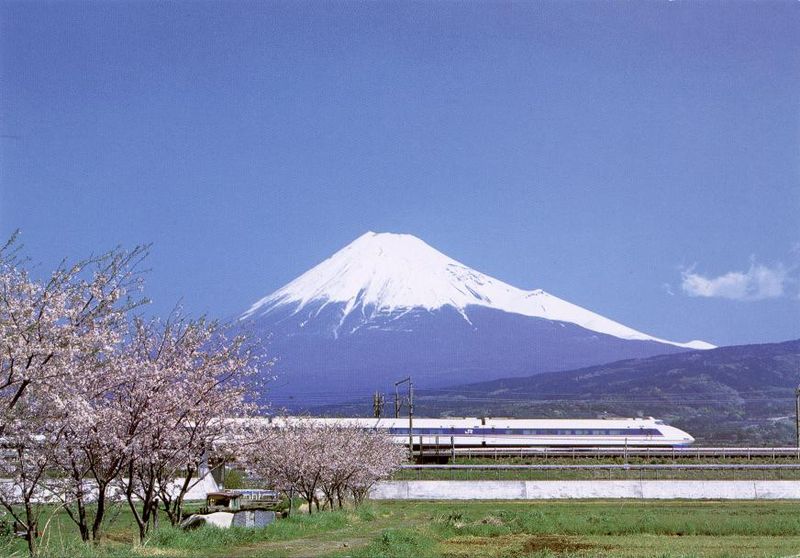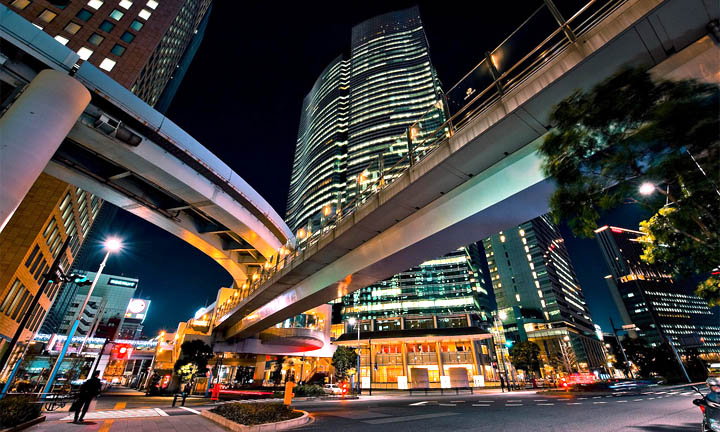“What are you most looking forward to seeing in Japan?” a good friend asked me the other day. Not surprisingly, it took me a while to think of an answer. The culture, the landscape, the cities? Japan is an alien land in many respects and it has a unique appeal for many people.
After a while my answer was a slightly embarrassed one. The thing I am truly excited about seeing is Japanese Infrastructure. This might be an odd choice but let me break it down for you.
The Shinkansen.

The Shinkansen, or Bullet Train is one of the best known icons of Japan. Travelling at 200mph on one of the safest and most reliable rail networks on the planet is not just impressive, it’s downright sexy. You may have heard recently about the maglev train that reached speeds of 310mph? To put into an unreasonable perspective my journey to my Parents would take 30 minutes instead of over 3 hours. Woof.
Japanese Expressways.
In the 1960’s Japan started building some colossal pieces of public work. In the UK I adore the legacies of Georgian and Victorian social works. The city of Portsmouth is basically one big testament to the Victorian Era with the worst elements comprising of most of the 1960’s high-rise buildings. Thanks to the American Firebombing of most of the major Japanese cities in World War 2 Japan had a pretty tragic blank canvas to work on during the 1950-60’s. Alongside the colossal construction of high-rise buildings, Japan met it’s new urban populations needs by creating the expressway network. These toll based super highways stretch far across Japan, ploughing through mountains, spanning rivers and clinging to the edges of hillsides. Hell even going through tower blocks as in the image below.
They are undoubtedly spectacular in both their ugliness and scale. But there is some pleasure to be taken at seeing humanity master the land around it to make it work for us.
Even the bike gets some love.
I found this image from a forum post and it really made me smile. As a keen cyclist seeing this little commuter route specifically for cyclists is like something from a dream in the UK. Portsmouth is the second worst city in the UK for cycling injuries and I blame part of that on the fact that nobody in the UK would be happy with an elevated cycle way passing their house. I guess we’ll just have to put up with people dying on the roads for a bit longer I guess.
Building Bridges
Talking of death, in 1955, 168 people died after the sinking of two ferries in the very stretch of water that you see above. Quite sensibly the Japanese government realised that this very dangerous stretch of water needed a bridge. The one in the image above is the Akashi Kaikyō Bridge which, after it’s completion in 1988, became the longest suspension bridge in the world. It’s also bloody gorgeous looking.
Neo Tokyo.
As spectacular as these various works are, it is at night that some of these structures really come alive. If a city is a social version of a living body then at night time you get to see the inner workings of a cities circulatory system in all it’s colourful glory. The most efficient cities and nations are the ones with the best infrastructure. Japan may not be completely perfect but when it comes to making some of the more mundane aspects of life utterly enthralling Japan has no peer.
Japan invented the Megacity and I am thoroughly looking forward to seeing the birthplace of our modern urban world.






With thanks to the blogger at http://nihone.wordpress.com/2012/12/28/the-bbc-on-japanese-infrastructure/
Excellent read mate.
Hey thanks! You seem like someone who can appreciate the little, mundane, day-to-day things that occupy the background space. You’d do well in Japan.
Pretty interesting blog, btw. Keep writing.